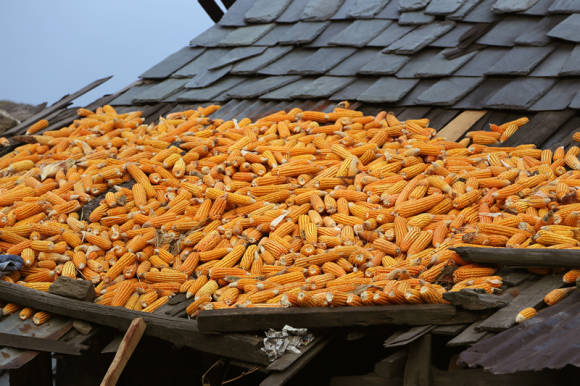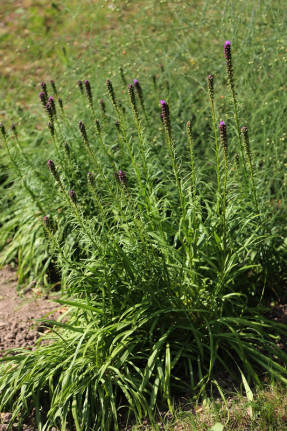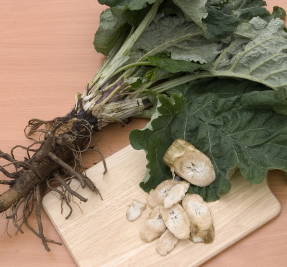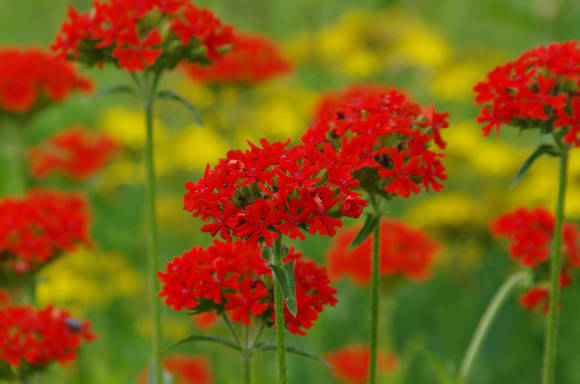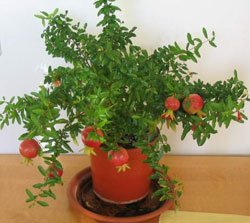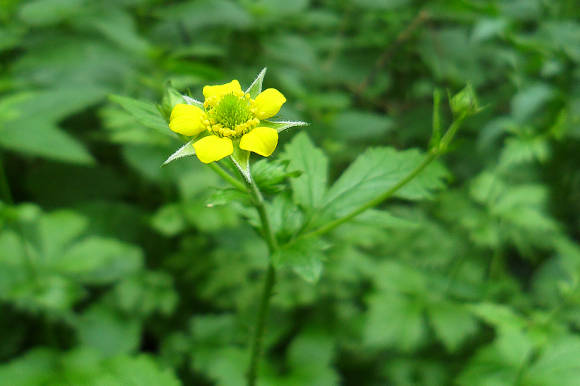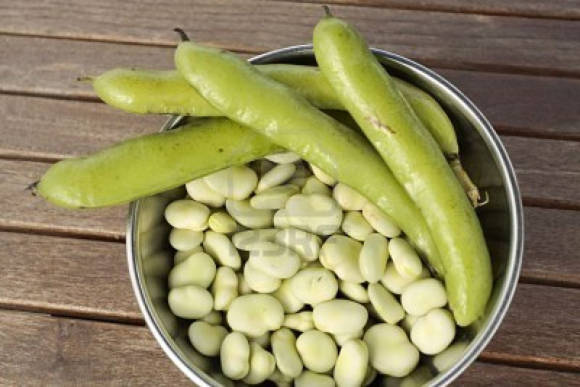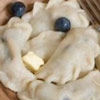Progress does not stand still, and this also applies to selection. Quite recently, currants were small, low-yielding, often sick, and although they were planted by private traders in every garden plot, they often scolded: “What kind of new varieties are these, worse than the previous ones ?!”. Nobody will say this for sure about the varieties that will be discussed in our article - the varieties of black currants released in 2006, that is, relatively recently, are already included in the State Register of Breeding Achievements of the Russian Federation, which means they are completely allowed for use. These are the varieties Charovnitsa, Chernavka and Minx. Let's talk about them in more detail and start with the Enchantress.
Black currant grade Charovnitsa

So, the variety is Charovnitsa. Even with its name, it should fascinate, cast a spell, and indeed, it is impossible to tear yourself away from it until you eat every last berry.
This variety was approved for cultivation in the Central Black Earth Region, which means that it is in this region that the variety will give it one hundred percent, show its better quality in terms of yield, and weight of berries, and taste characteristics. The author of the variety is the great breeder Tatyana Vladimirovna Zhidekhina, she really knows a lot about varieties, and anyhow she will not miss for sure. From her caring, one might say, mother's hands (with such love she does castration and pollination), hundreds of wonderful hybrids have come out, and will come out, which will surely grow to varieties.
Nasha Charovnitsa is a variety characterized by medium ripening juice and universal purpose. The plant itself, due to its average height, will fit literally in every garden plot, the gardener will definitely find a place for a beginner. The spreading of the bush is also average, in the autumn season it can be tied with twine in a businesslike way and fastened tightly so that the snow does not fill up the center of the bush and does not break the precious branches that simply burst from the harvest during the ripening period.
Even despite the fact that the variety has thick, straight, grayish shoots with slightly noticeable pubescence and shine, they still, under the weight of powerful bunches full of berries, sometimes lean to the very ground and often even break. The leaf blades are medium in thickness, green in color, which indicates the full-fledged work of photosynthesis processes for the harvest.
Well, now let's move on to berries, in fact, for the sake of which any gardener buys new varieties of currants. The shape of the Enchantress berries is like friendly gypsy eyes, large and black, the skin of the berries is barely felt in the mouth, they literally burst, spreading out with delicate juice, and a small amount of seeds adds to the pleasure of consuming berries. But, despite the thin skin, the fruits are well transported, it is worth picking them a little unripe. The taste of the berries is sweet and sour, very pleasant and refreshing in the heat, however, without the aroma, but in this case it would rather be out of place here.
The average weight of a berry strongly depends on the agricultural background on which the variety is grown. On good, loose, fertilized, nutritious and moist soil, the mass could have jumped even for 2 g, but on the meager soil of the selection school it barely exceeds 1.3 g. In order to find out more about the variety, Tatyana Vladimirovna ordered a chemical analysis of the fruits, and this is what it gave: in fruits - up to 10% sugars, only 2.6% acids and up to 189 mg% ascorbic acid. That is, the fruits can be treated for a cold by simply eating them raw.
The tasters rated the taste of the berries at 4.5 points, but this is clearly an underestimation - 0.1 or 0.2 points could be added safely. By the way, with an average weight of 1.3 grams (don't you forget?), The yield will be more than a hundred centners per hectare and closer to 102 centners.
By the way, the variety does not freeze, does not require watering, it rarely gets sick, and in the entire history of observations, only a few skinny spider mites were seen on it.
Black currant grade Chernavka

The next magical variety is Chernavka, also the brainchild of the hands of the incomparable Tatyana Vladimirovna Zhidekhina, who works at the Federal Research Center (now VNIIS) in Michurinsk.
What can you tell about the Chernavka variety? Well, it’s just a glimpse of the fact that it was not for nothing that it was called that, the berries really now glow with blackness like the Arabian night, when there are not a single star in the sky.
By tradition, the variety is included in the State Register for the Central Black Earth Region, apparently only here it can show itself in all its glory and give the maximum yield. What do we know about the variety, is it worth taking in nurseries with a good reputation or is it simply not there? Of course, there are, and a lot, because this is a cultivar that matures in the mid-late period and has a universal purpose. The bush is medium spreading, so choose a larger place and do not forget to tie it up for the winter.
Shoots of medium thickness, but straight, also often sag under the mass of berries, especially those located at the edge of the bush. The color of the shoots is grayish, the pubescence is weak, and the shoots do not shine in the sun. The leaves are medium in size, but rich green, which means that the photosynthetic apparatus works like a clock.
We turn to the most interesting for the gardener - to the fruit brush, it can be from medium to long - it is clear that on poor soil, without watering and fertilizers, one can only dream of a long brush, but on good soil the variety will manifest itself in full force.
Berries, berries, finally. Even on non-fertilized, oak, clay soil, the berry will weigh about 1.5 g, but imagine if we prepare the site properly, apply fertilizer and water it - three grams, no less, we will get it! By the way, tasters evaluate not only the taste of berries, but also their appearance, and so they said that the berries are unambiguously tasty and large, the range of taste is from 4.5 to 4.9 points, but on average it still turned out to be 4.5, although , in my opinion, undeservedly.
Of the undoubted advantages of the variety, one should note its frost resistance and such a weak susceptibility to diseases and pests that it is possible not to treat it - maybe it will pass by itself!
Black currant grade Minx
Well, the third grade, also obtained in the current FNTs T.V. Zhidekhina, this is a variety of Minx. Why is the variety named so, buyers in the nursery will ask? Is it because it can ripen almost a month earlier than other varieties of currants and berries will turn into mush on a branch? Let's figure it out!

Out of habit, let's start with the tolerance region, and again this is the Central Black Earth Region. Well, were the buyers right when they asked the question about the ripening time? It turns out yes, this variety is not just an early, but a very early ripening period, Therefore, if you want to taste fresh currants the very first among summer residents, then feel free to plant Minx and eat the fruits while they are still green on the branches of other varieties, and therefore completely tasteless.
Plus to the acquisition of this variety, you can add its weak spreading, thin and straight shoots, through which it is better not to jump, but to go around the bush if you need to go to another row, otherwise you will break everything and grind the berry to the ants for joy. The leaf blades are light green, the photosynthetic apparatus should work well.
Moving on to the interesting thing - the fruit cluster is from medium to short, which means that if you properly fertilize the soil, water it and fight weeds like a leper all summer, we will get an average brush at best, but with early berries! This motivates you to pick up the hoe more often.
And the berries? It turns out that they are quite large, and even on oak soil and trampled by laboratory slaps, they weigh up to 1.5 g, but what will happen in the ideal grandfather's garden? At least twice as much! Let's turn to the tasting assessment - it goes off scale - up to 4.8 points, almost the maximum, this is almost the leader in taste among the varieties. And if we take into account the yield, which is approaching 140 quintals per hectare, then the variety definitely needs to be taken.Well, it’s probably not superfluous to say that the variety does not freeze at all and, as the State Register states, is sick and weakly affected by pests - that is, a couple of aphids and one leaf with powdery mildew and that's it, the bush is healthy, even if you launch it into space!
These are they, the newest varieties included in the State Register and received at the Michurin Federal Research Center - feel free to take it!
Photo by the author
